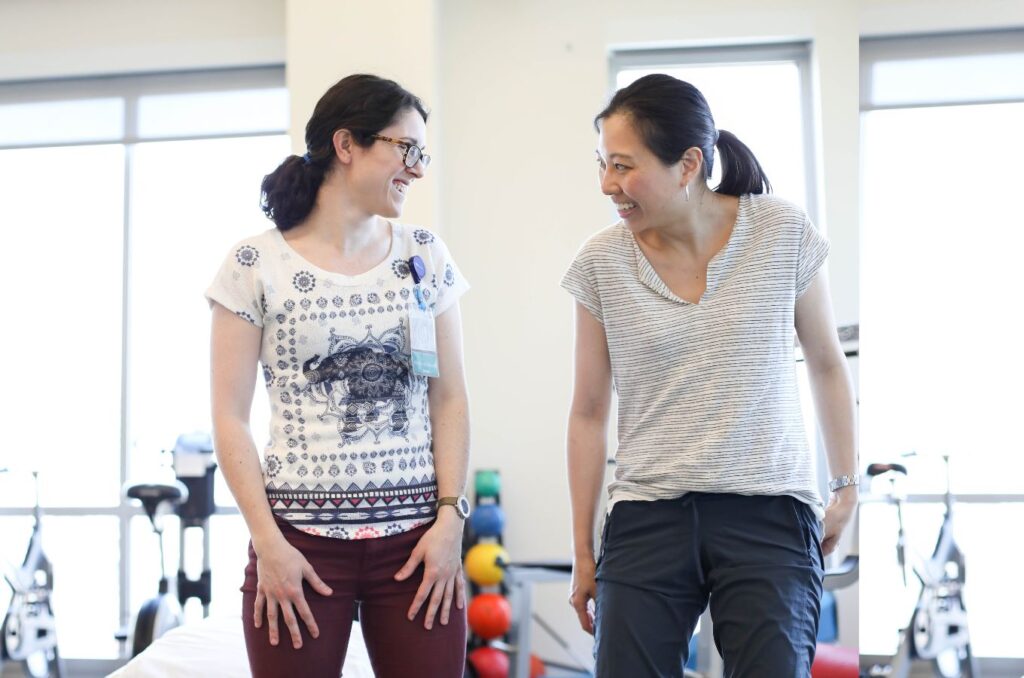
Weak orgasms, incontinence, constipation, and lower back pain are often linked to poor pelvic health. According to early studies, approximately one in four women will experience such pelvic problems during their lifetime, and roughly a third of men might face similar issues. While physical therapy offers a solution, as of 2022, only 120 therapists in California were certified to treat pelvic health conditions, with Nevada having just one.
In response to this gap, the University of California, San Francisco (UCSF) has launched a new, year-long Women’s Health Physical Therapy Residency program. This initiative aims to train more physical therapists in women’s health across various life stages, from puberty to menopause and beyond, with a strong emphasis on pelvic health, which affects all genders. The program includes direct patient care and one-on-one mentoring with experts in pelvic health physical therapy.
Understanding Pelvic Health
Many people have heard of the “pelvic floor,” but what does it truly entail? The pelvis is a bony structure located between the belly and thighs, connecting the legs to the trunk and spine. It houses and protects vital organs, blood vessels, and nerves. The pelvic floor muscles, located at the base of the pelvis, consist of several muscle layers that act like a hammock, cradling these organs and playing a crucial role in core stability, as well as bowel, bladder, and sexual function.
Unique Changes in Women’s Bodies
Women’s bodies undergo numerous changes throughout their lives, necessitating specialized physical therapy. Hormone fluctuations impact every system in the body and can vary throughout life stages and even menstrual cycles. For instance, hormone changes affect the flexibility of ligaments in female athletes, increasing their risk of certain injuries. Pregnancy and childbirth also bring about significant physical changes, heightening the risk of pelvic floor disorders and urinary incontinence. Menopause introduces another major shift, marked by a decline in estrogen levels, affecting bone density, muscle mass, and connective tissues, including those in the pelvis and pelvic floor.
Addressing Historical Oversights
Historically, medical education has predominantly focused on the cisgender male body, leading to a lack of understanding about how diseases and conditions manifest differently in people with ovaries and uteruses. Women were often excluded from medical research due to the perceived variability introduced by hormone fluctuations. This oversight has contributed to the treatment of women’s bodies as if they were identical to men’s, despite significant physiological differences.
Dispelling Myths About Aging and the Pelvic Floor
One prevalent myth is that urinary incontinence and other pelvic issues, like organ prolapse, are inevitable consequences of childbirth or aging. Prolapses occur when pelvic floor muscles or ligaments weaken, causing organs like the bladder or uterus to move down into the vagina. While these issues are common, they are not unavoidable and can be addressed through pelvic physical therapy. UCSF’s residency program aims to train physical therapists to specialize in these needs.
Pelvic Health Beyond Gender
Pelvic health is not solely a concern for women. Individuals assigned male at birth share many of the same pelvic muscles and can experience similar issues with bowel, bladder, and sexual dysfunction. Conditions like prostate cancer may also present additional concerns. Pelvic physical therapy can help address these issues. Transgender and non-binary individuals may have unique pelvic health needs, and UCSF’s residency program equips graduates with the skills to treat pelvic health problems in all people.
UCSF’s Commitment to Women’s Health
UCSF has been a leader in women’s health for nearly three decades, being among the first federally designated National Centers for Excellence in Women’s Health. The new physical therapy residency program continues this legacy, addressing the critical need for specialized physical therapy for women and pelvic health. Residency graduates often have higher first-time pass rates for board exams compared to those who do not pursue residencies. UCSF’s program prepares residents to become leaders and educators in the field of women’s and pelvic health physical therapy.
Residents gain diverse experiences, from working alongside therapists with various specialties and teaching doctoral students to completing community service projects. This fall, UCSF’s Physical Therapy department debuts its new Women’s Health Residency Program, which includes training on women’s bodies during and after menopause.






